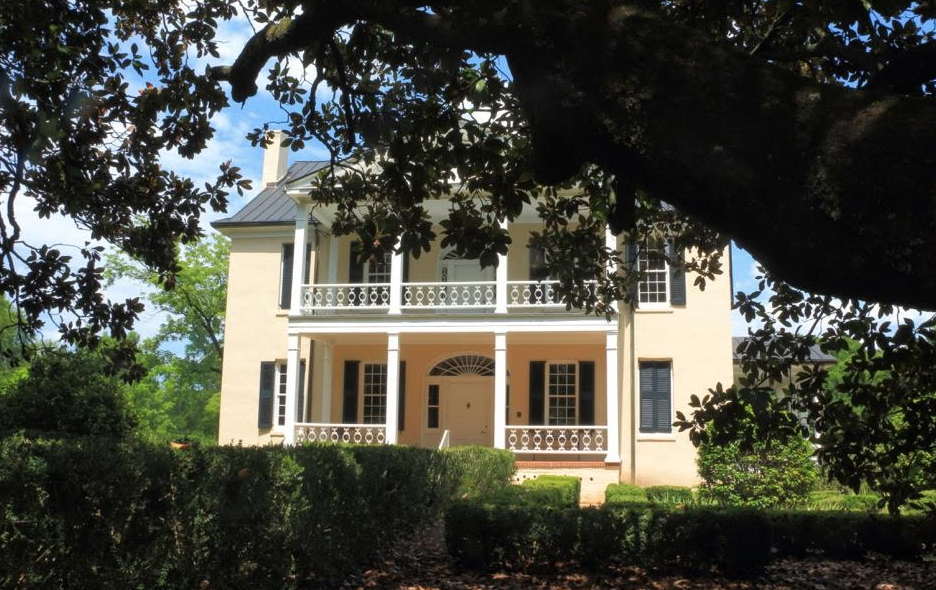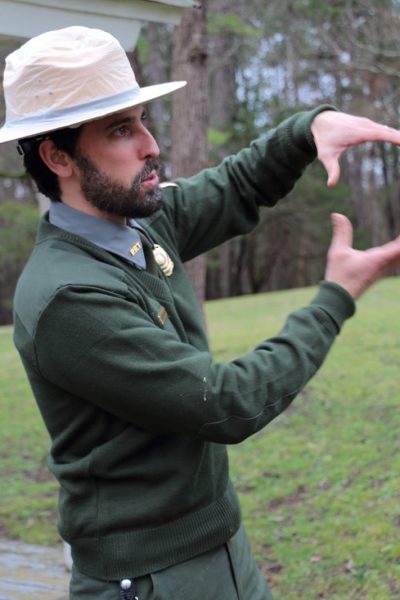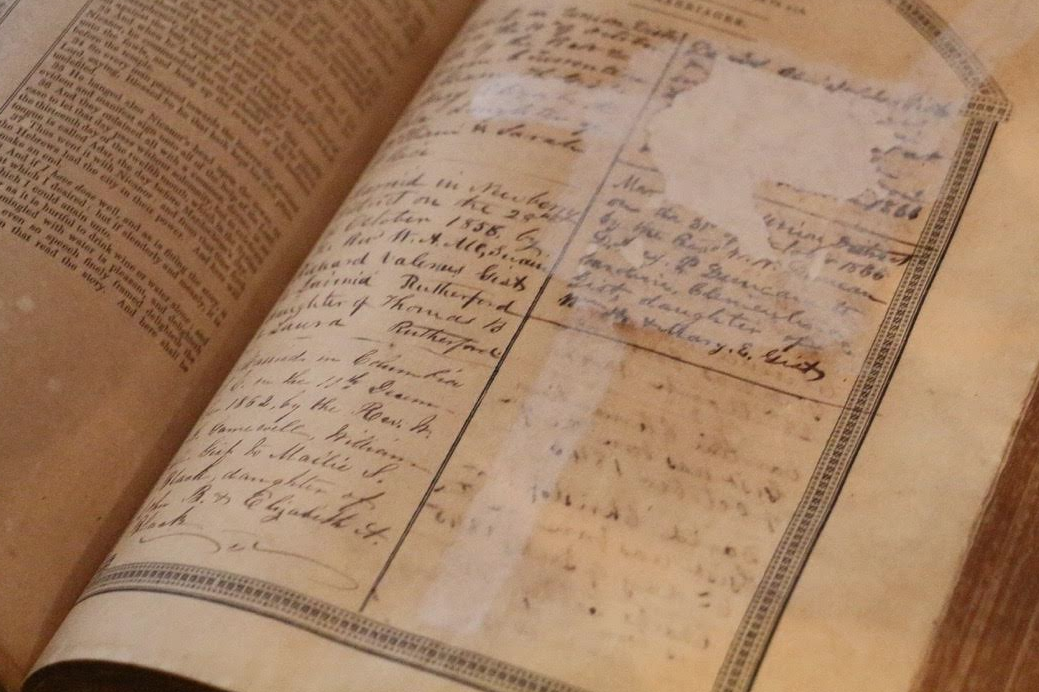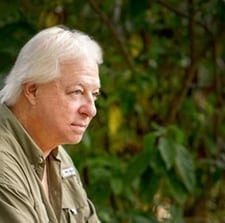From Rose Hill To Brattonsville, Part I
April 5, 2019By Tom Poland
Journey Through Time and Space
Faulkner was right. The past is not past. It’s hiding. Travel some backroads, and if you know where to look, you can find it. I did one cool Saturday in February. My journey unearthed some of South Carolina’s past, a past that’s given us so much history, a history being further examined. I traveled to Rose Hill Plantation State Historic Site and Historic Brattonsville, places that draw back the curtains on a past overlooked by many. Interpreters Nathan and Sara Johnson guided me back to a time seen through a lens called history. I could not have been in better hands. I saw the past up close.
Rose Hill Plantation State Historic Site
When you turn off Sardis Road into Rose Hill Plantation, look uphill through old magnolias and you’ll see a plantation home. Closer in, you’ll walk past a 160-year-old rose bush, a glorious thing abloom, a garland of pink roses amid jungle-like greenery. Rose Hill, indeed. You’ll see a log cabin, freestanding kitchen, and tenant home too. More than that, you’ll see the past.
Park Manager Nathan “Nate” Johnson, in his forest green, gleaming brass South Carolina State Park Servce uniform brings protocol to Rose Hill Plantation State Historic Site. Before coming to Rose Hill, Nate was a ranger with the National Park Service at the homes of Frederick Douglass, Mary McLeod Bethune, and Dr. Carter G. Woodson, a fine provenance.

Photo: Elements of the Gists’ 1800s garden, including magnolias and boxwoods, surround the historic mansion.
Johnson, proudly wearing his ranger’s hat, delivers a synopsis. “By 1860, Rose Hill was a 2,000-acre cotton plantation. Today, the South Carolina State Park Service protects a 44-acre site at the center of the former plantation. The U.S. Forest Service administers the remaining acreage as part of Sumter National Forest.”
 I look around and see thick forests in all directions, but I know that beneath the leaves and among the roots of oaks, walnuts, and pines lies soil where cotton once grew. Nate continues, “As many as 178 people were enslaved at Rose Hill by 1860, making it one of the largest enslaved communities in Union District.”
I look around and see thick forests in all directions, but I know that beneath the leaves and among the roots of oaks, walnuts, and pines lies soil where cotton once grew. Nate continues, “As many as 178 people were enslaved at Rose Hill by 1860, making it one of the largest enslaved communities in Union District.”
Photo: Park Manager Nate Johnson discusses upcoming changes to Rose Hill.
This history of cotton, slavery, and the plantation’s grandeur resurrect the antebellum era for many, but Johnson knows there’s more to Rose Hill than that. “The site contains significant resources besides the main house. Many of the site’s significant stories happened after the Civil War.” To make his point, he brings up post-Civil War times. “Reconstruction is a richly documented period in Rose Hill’s history that sheds light on the hopes, dreams, needs, and expectations of freedpeople. Labor contracts, censuses, voter registrations, court testimonies, school and church records, and militia enrollments are some of the documents we rely on to tell the story of Reconstruction at Rose Hill.”
Some know Rose Hill as the home of “Secession Governor,” William Henry Gist, the 68th Governor of South Carolina from 1858 to 1860. A leader of the secession movement, he signed the Ordinance of Secession December 20, 1860, breathing official life into the Confederacy. That’s the narrative many are familiar with but history is multifaceted and Rose Hill is no exception. Johnson’s mission is to tell lesser-known Rose Hill stories. Walking the sloping hilltop he explains. “Oral histories from former sharecroppers and tenant families who once lived on the plantation have helped us gain insight into the history of Rose Hill during the early 1900s. Their memories bring to life the landscape, buildings, roadbeds, and archaeological sites around the former plantation. We share their memories with visitors so they feel connected to the site’s history and understand its significance.”
I’ve been to Rose Hill twice. I imagine that time when fields of white and green surrounded it. Back then, folks could see clear down to the Tyger River. The past Faulkner referred to hides here but there’s a plan to unearth some of it. Said Johnson, “Archaeology will help us discover more about the past at Rose Hill. We’re preparing for an archaeological survey of the entire 44-acre historic site. Findings from the survey and other projects will provide valuable information that can be incorporated into the site’s reinterpretation.”
Ruins of tenant houses line an old roadbed. “By studying these remains and conducting oral histories with people who once lived in these tenant houses, we are gaining a deeper understanding of the changing landscape and evolving history of the site,” said Johnson.
For the last seventy years, people have interpreted Rose Hill as a secessionist movement shrine or a window into the lifestyle of an upstate planter family. Change is coming. “A recent plan for reinterpretation aims to reinvigorate the site and help it grow,” said Johnson. “Through community outreach, oral history documentation, in-depth research, and archaeological investigations, the South Carolina State Park Service is engaging the public with difficult, yet significant, histories: slavery, Reconstruction, racial violence and terrorism, and the continuous struggle in South Carolina to define freedom, equality, and citizenship.”

Photo: The Gist family Bible, an 1842 edition, is one of dozens of original artifacts at Rose Hill. Old records have long hidden inside this Bible
To see Rose Hill Plantation is to glimpse another time … Family records tucked into an old Bible. Neck collars resting on a handsome trunk. An old tin tub where folks bathed … the L. Rickets Baltimore piano in the ballroom merits a look. Close your eyes and imagine stately dancing to a minuet from an earlier century, for surely they did. Then there’s the four-poster bed where Gist and the First Lady slept. See the portrait of distant cousin Belle Culp, hair parted down the middle like Alfalfa. Walk into the freestanding kitchen out back … see its spacious twelve-tiered brick fireplace where cooking took place. In a tenant home out back in dim light you’ll see where someone pasted newspaper to the wall to keep out the cold. Look closely and you’ll see a word, “cotton.” Check out the old log cabin where someone patched its wood with mortar. Step back and see what looks like eye of a gator in the woodwork. The imagination gets a workout here.
Johnson said Rose Hill’s visitors enjoy the site’s stories. “The site has a long and difficult history that helps us understand the struggle in South Carolina to define freedom, citizenship, and equality. We tell those stories through the perspectives of the Gists, enslaved people, freedpeople, sharecroppers and tenant farmers, as well as their contemporaries. It’s powerful to engage with history where it actually happened.”
The new vision is to become “A plantation that uses its difficult past to help shape a better future.” Thus, the Rose Hill team has been researching Reconstruction and late 19th-early 20th century history at the site to incorporate it into their interpretation. “Part of this research has included conducting oral history interviews with former sharecroppers and community members connected to the history of Rose Hill,” said Johnson.
“We’re preparing for an archaeological survey of the entire site,” said Johnson. “We’re exploring how to open up the tenant house, which has been closed to the public for about fifteen years. We are also having conversations with the U.S. Forest Service, which maintains most of the former plantation as part of Sumter National Forest, about how to interpret and provide access to resources associated with the site, such as a cemetery for people enslaved by the Gists. Many of these projects will enable us and our community to better tell diverse stories of the African-American experience at Rose Hill and surrounding area.”
Visit Rose Hill Plantation. Nate Johnson, park manager, will give you a memorable tour and interpretation. “I establish the park’s vision and set goals so that we can reach park and agency missions. We’re in the process of reinterpreting the site to include all its complex layers of history and memory. Community outreach, collaborating with partners, and raising the park’s profile are at the core of my job. We want to get more people involved with Rose Hill and increase awareness of our site’s relevance for everybody.”
Johnson takes great pride in his work. As a kid, he loved visiting museums and historic sites, along with taking family road trips, reading history books, studying for social studies classes, and listening to elders talk about the past. That fondness for understanding the past lives in him still. “I have always had a strong belief that we can and should learn from our past,” said Johnson. He’s right.
In Part II, Preservation/Restoration Specialist Sara Johnson takes us to Historic Brattonsville.
Journey through time and space. Visit the website for details on planning a trip to Rose Hill.
Rose Hill Plantation State Historic Site, https://southcarolinaparks.com/rose-hill
864.427.5966
2677 Sardis Rd.
Union, SC 29379
Visit Tom Poland’s website at www.tompoland.net
Email Tom about most anything. [email protected]
Tom’s work appears in publications throughout the South. His books include South Carolina Country Roads, Classic Carolina Road Trips From Columbia, Georgialina, A Southland, As We Knew It, and Reflections of South Carolina, Vol. II. He writes about the South, its people, traditions, lifestyle, and culture. He’s member of the SC Humanities Speaker’s Bureau. Governor Henry McMaster conferred the Order of the Palmetto upon Tom for his body of work on South Carolina. Tom grew up in Lincoln County, Georgia, and graduated from the University of Georgia. He lives in Irmo, South Carolina.













